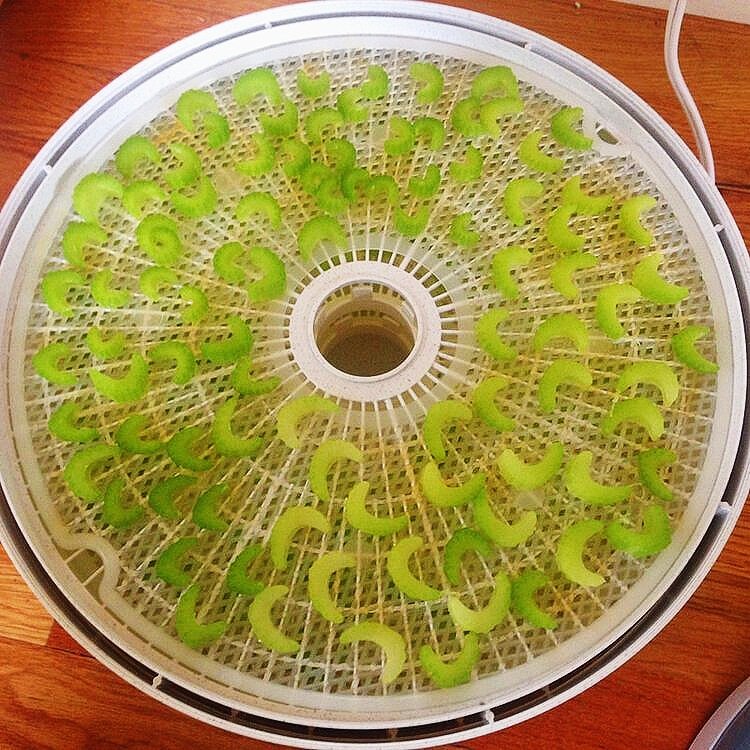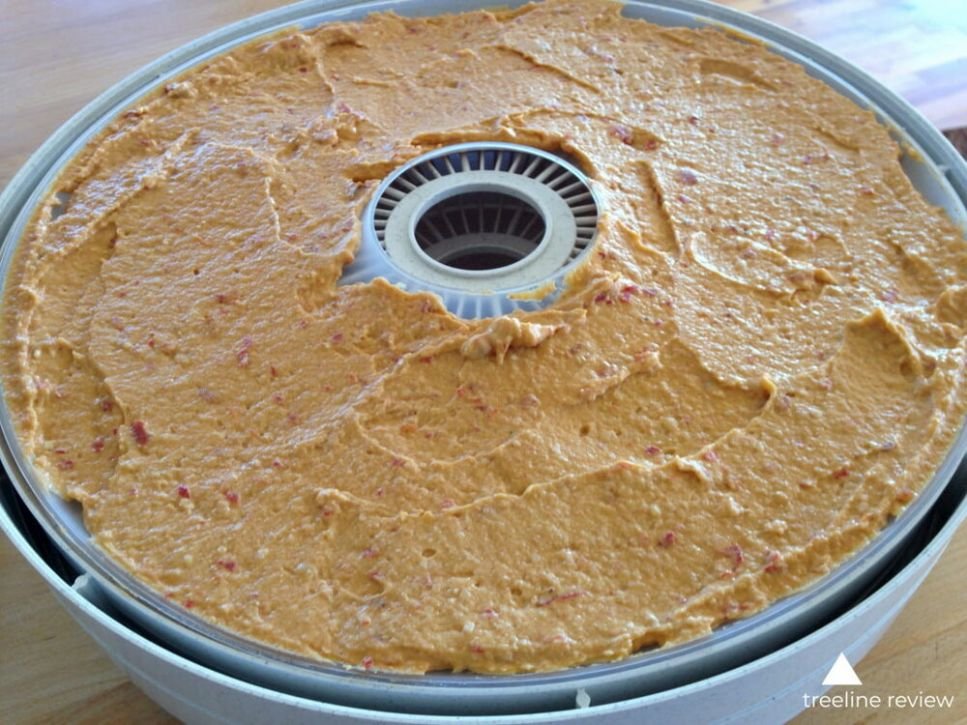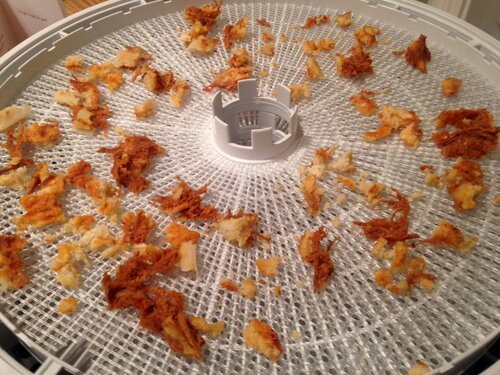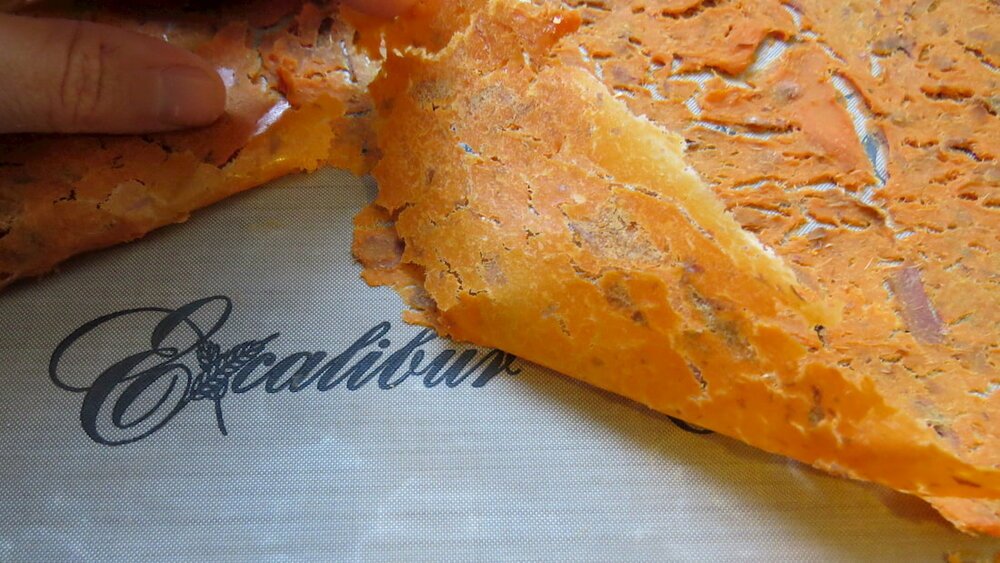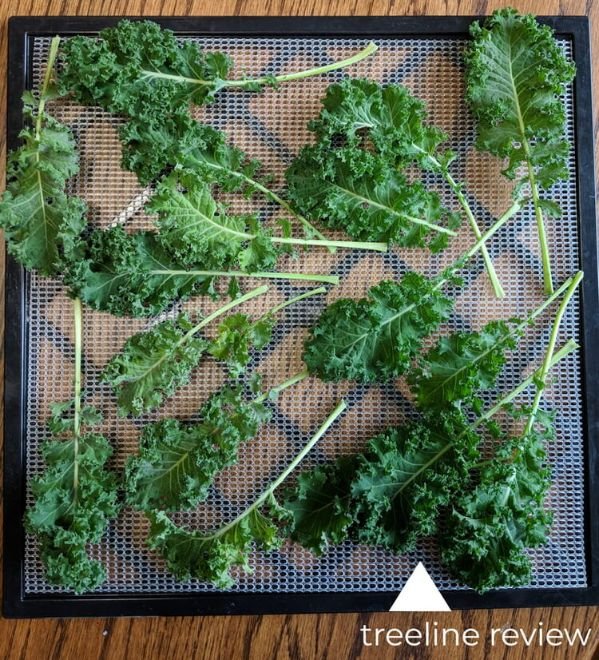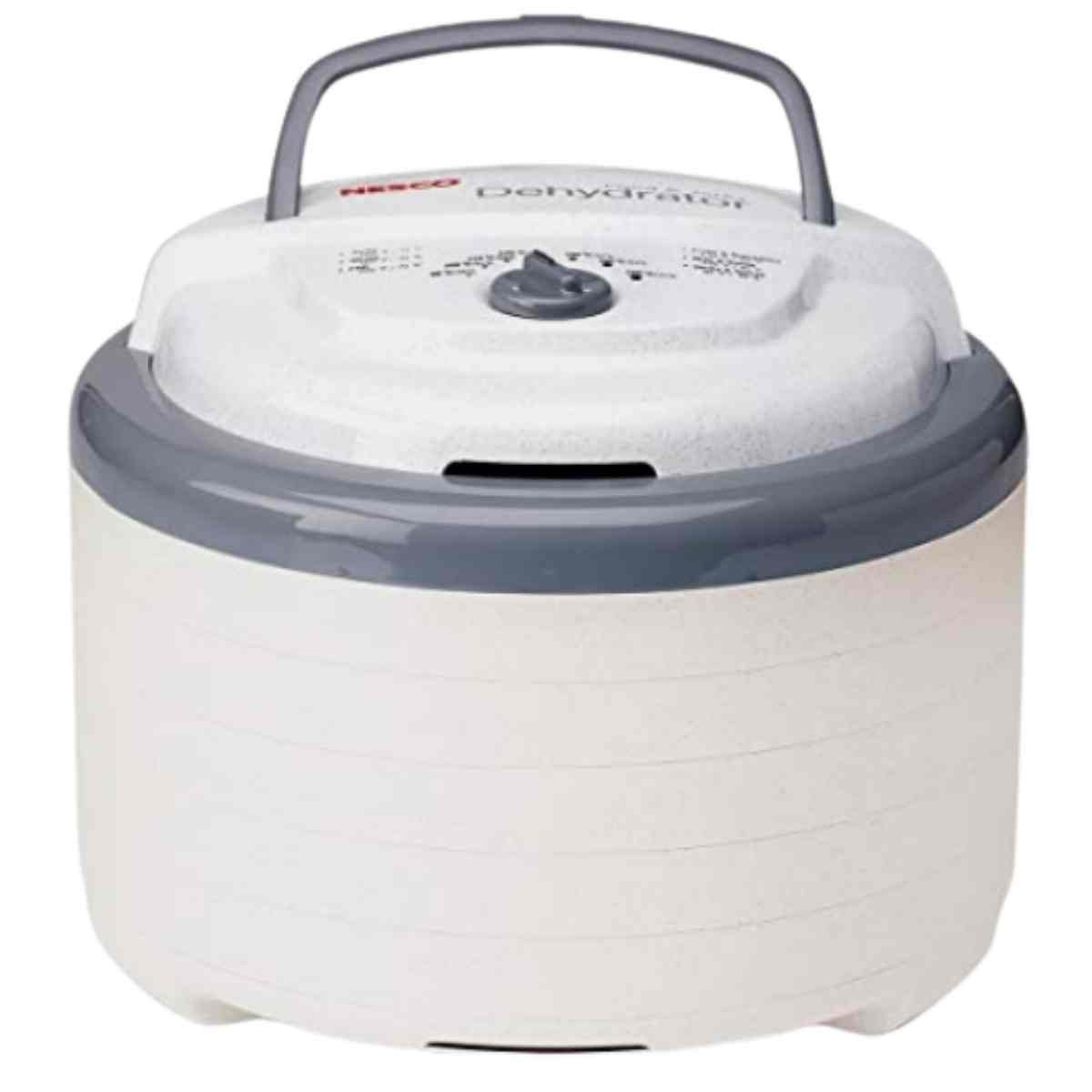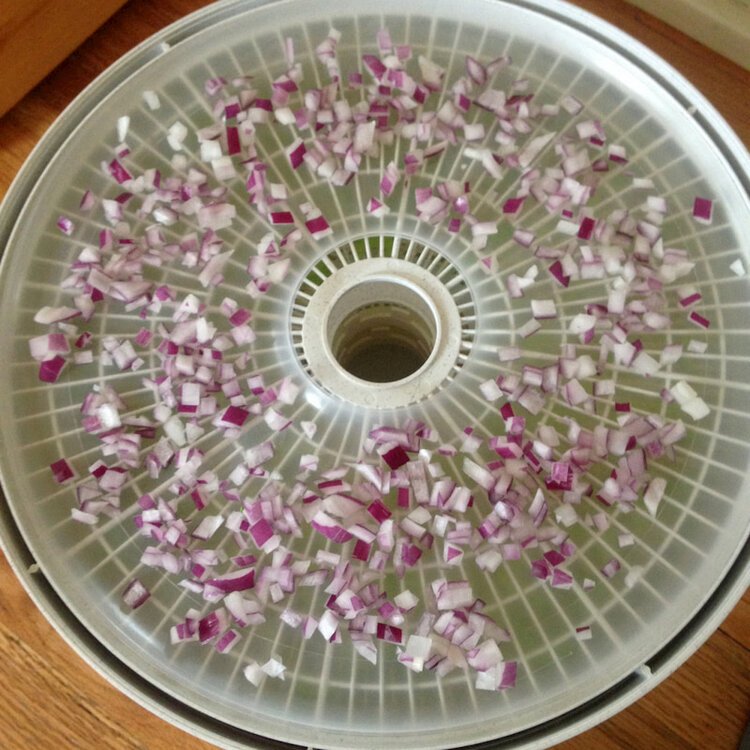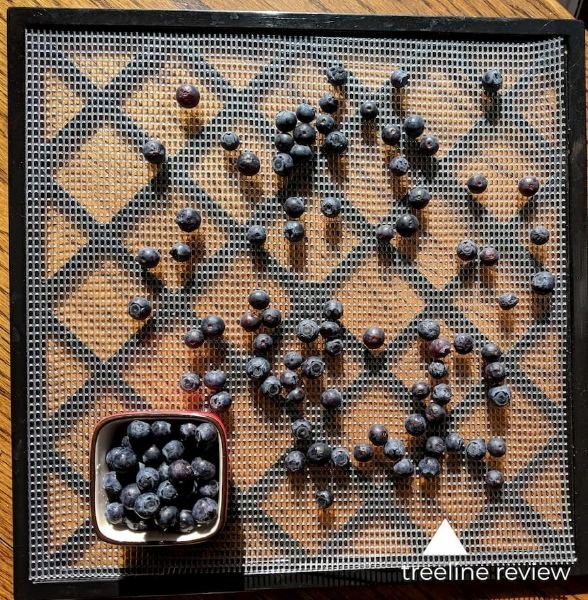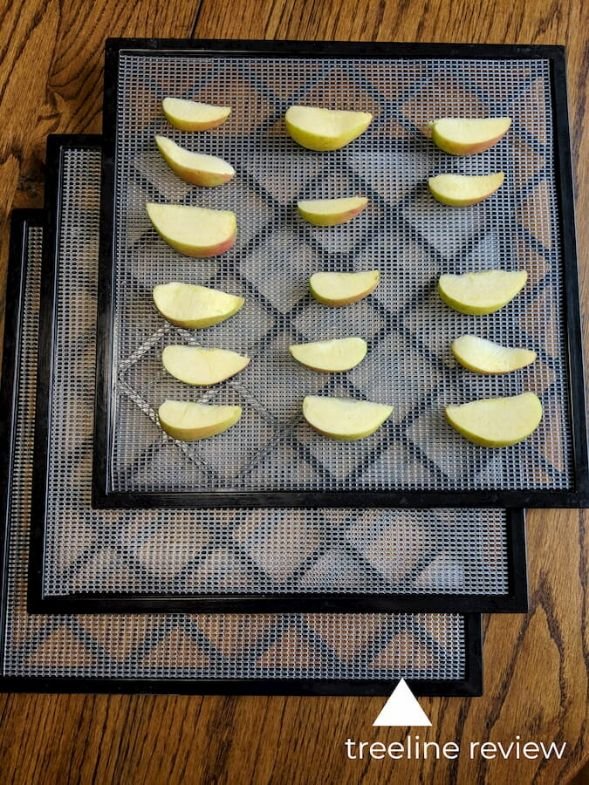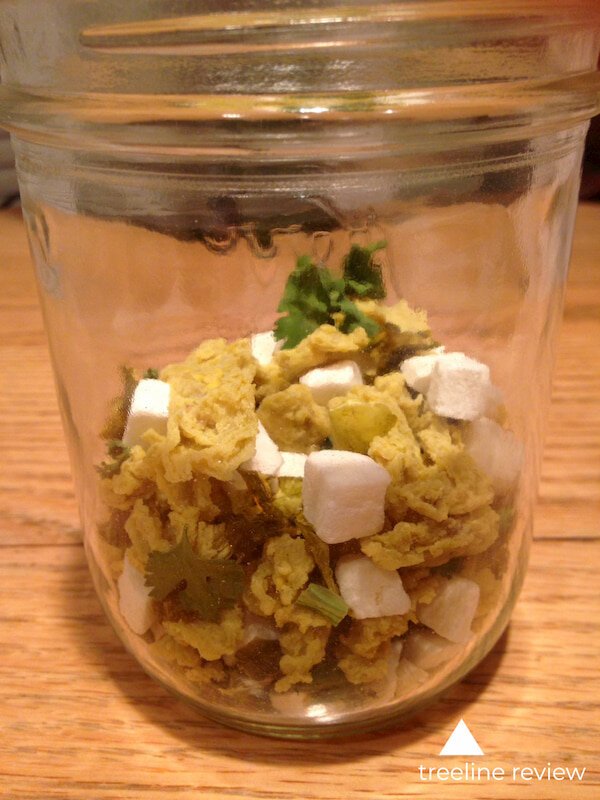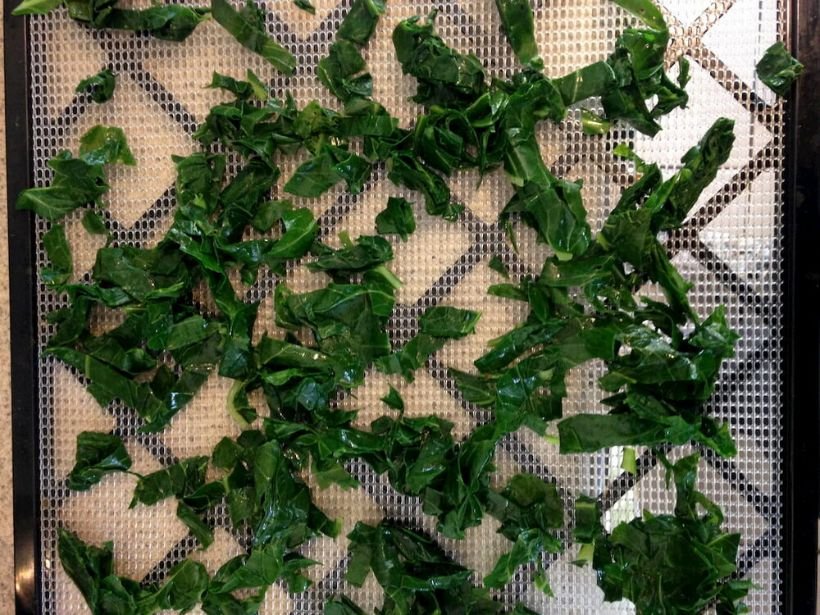Best Dehydrators for Backpacking Meals of 2025
Dehydrators for Backpacking DINNERS, DRIED Fruit, and Jerky for Hiking
February 24th, 2025
Home > Gear Reviews > Electronics
Dehydrating your own backpacking food is a great way to add flavor, nutrition, and variety to your backcountry meals. It can also save a lot of money compared to commercially prepared meals. We tested the most popular home dehydrators to find the best dehydrator for backpacking meals.
I’m a prolific backpacker who has dehydrated all my meals for my thru-hikes of the Pacific Crest Trail, Arizona Trail, and 11 other multi-week backpacking trips—and have made more than 1,100 dehydrated backpacking meals.
I’m also a former health inspector whose job was to ensure restaurants were up to code on keeping food at the safe temperatures. I’ve used what I learned from that job to inform how to prepare food in my home dehydrator safely. We also interviewed backcountry chefs about which dehydrator features they thought were essential.
We tested and made hundreds of backpacking meals to find the best dehydrator for making backpacking meal for most users. We judged food dehydrators on ease of use, features, price, capacity, and safety features.
Prefer pre-bought dehydrated backpacking food or want to see what flavors are possible? Check out our Best Dehydrated and Freeze Dried Backpacking Meals guide.
We create reader-supported, objective gear reviews independently selected by our editors. This story may contain affiliate links, which help fund our website. When you click on the links to purchase gear, we may get a commission, without costing you an extra cent. Thank you for supporting our work and mission of outdoor coverage for every body! Learn more.
Comparison Table
| FOOD DEHYDRATOR | TREELINE AWARD | STYLE | WATTS | FAN? | TIMER? | ELEMENT LOCATION | TEMP RANGE (F) | SHAPE | SIZE (SQ. FT) | TRAYS | MAX TRAYS |
|---|---|---|---|---|---|---|---|---|---|---|---|
| Nesco FD-1040 Gardenmaster Pro | Best Overall Read why |
Stacking | 1000 | Y | Y | Top | 90-160 | Circle | 5.2 | 4 | 20 |
| Excalibur 3926T | Best Upgrade Read why |
Drawer | 600 | Y | Y | Back | 105-165 | Square | 15 | 9 | n/a |
| Nesco FD-75 Snackmaster Pro | Best Budget Read why |
Stacking | 600 | Y | N | Top | 95-160 | Circle | 5 | 5 | 12 |
* See our Deals Page for discounts and sales on products that win our awards.
The Best Food Dehydrators
Best Food Dehydrator For Most Backpackers:
Nesco FD-1040 Gardenmaster Digital Pro
Style: Stacking
Watts: 1,000
Temperature range: 90-160 F
Size (sq. feet): 5.2 square feet
Trays: 4-20
What we liked: larger motor dries quickly, adjustable temperature range can do everything from cheese to meat, airflow, dishwasher safe
What we didn’t like: loud, only comes with one screen and one fruit-roll up tray
The Nesco FD-1040 Gardenmaster Digital Pro models have been on the market for years and have consistently been considered the best dehydrator by multiple reviewers. We think the Gardenmaster Pro FD-1040 is the best dehydrator for most backpackers who want to make their own food. This Made in the US dehydrator machine excels in balancing features and middle price point.
The Gardenmaster’s vertically-stacked trays can be expanded up to 20 trays—more than double the capacity of most dehydrators on the market. The ability to handle that many trays at once is due to 1,000 watts of drying power for optimal air flow.
The only dehydrator we noted that has a larger motor is the STX International Dehydra 1200, a dehydrator that costs twice as much as the Gardenmaster. While 20 trays is probably overkill for most backpackers, we like the ability to expand our tray number when planning food for a long trip or a big group. Also, a larger motor dries even small amounts of food more quickly, saving you time and money (on your power bill).
Nesco FD-1040 Gardenmaster Digital Pro
The Nesco has a wide adjustable temperature range that goes up to 160 F degrees. That makes it well-suited for dehydrating meat, as seen in this photo of the trays loaded with sliced corned beef ready for dehydration. Photo courtesy Melissa Spencer
Temperature range
The Gardenmaster’s wide, adjustable temperature range of 90 - 160F allows users to dehydrate a variety of foods. The low end of 90F allows you to dehydrate shredded cheese without melting or changing flavor by cooking it. And 150F+ protects against bacterial growth when drying up some taco meat.
Both the experts we interviewed, backpackers Melissa Erkel and Whitney LaRuffa, agreed that an adjustable thermostat with a wide temperature range is especially important for backpackers due to the variety of foods they may want to dehydrate. This is especially true for meats and other proteins, which require a higher temperature.
Related: Best Protein Powder
Airflow
We liked that with the Nesco dehydrator, they don’t have to fuss over rotating trays to allow for even drying. Nesco‘s proprietary airflow system does the job for you by circulating the air evenly throughout. Having owned other brands of dehydrators in the past that dry the food closest to the fan quicker, I can appreciate the saved effort of good airflow.
Easy clean-up
We also like that the Gardenmaster has dishwasher safe trays. It makes it easy to clean up sticky foods that backpackers might make like sauces or fruit leather (though that’s easier done with a fruit roll-up tray than the trays that come with the dehydrator). Our research showed that not all dehydrators’ trays can be put in the dishwasher.
Temperature control
The Nesco screen prevents smaller items like cilantro leaves (shown here) from falling. Photo courtesy Melissa Spencer.
One major perk of the Gardenmaster is the digital timer, which is usually only found on more expensive models of dehydrators. This feature allows you to set the timer and go to work or bed and not worry about over-drying your food.
Erkel and LaRuffa thought this was a nice feature, but consider it non-essential because they often dry several things at a time, necessitating checking on them every couple of hours anyway.
Nesco also addressed a common complaint of dehydrator users and moved the new Gardenmaster’s heating element/fan to the top. That means you won’t burn out the fan’s motor when a little salsa slips between the cracks.
All the dehydrators with fans located at the bottom have customer complaints about motor failure when food falls or drips into it.
Motor placement
I’ve also had a personal experience with a dehydrator heating element failing from dripped food. For this reason, we disqualified any dehydrator models that didn't place the motor on the top or back of the device. A heating element on the top also makes cleanup easier, having a cleanable pan at the bottom instead of a non-submersible motor.
A top view of the Nesco loaded with some fresh hummus ready for dehydration. Photo courtesy Melissa Spencer.
The Nesco can be used to dehydrate prepared foods from the frozen or refrigerated aisle like the tamales seen here. Photo courtesy Melissa Spencer
Screens and trays
The Gardenmaster comes with one screen (for dehydrating smaller items) and one no-spill fruit roll sheet. In our experience, it is worth purchasing a couple more of each for dehydrating chopped veggies or sauces.
Even though it is expandable, the Gardenmaster only comes with four trays out of the box (with a total drying area of 5.2 square feet).
In our experience, four trays would not even be enough to do a long weekend backpack for two people in one dehydrating session. This means that even though the Gardenmaster’s large motor can accommodate dehydrating a huge batch, you’ll have to buy the extra trays.
So while the 4-tray version of the Gardenmaster is a deal compared to our upgrade pick, the Excalibur, if you want all 20 trays, their prices start to look similar. But, as we said above, 20 trays are likely more than you’ll need unless you’re making meals for the entire scout troop.
Related: Best Water Filters and Purifiers
Noise
Due to its large fan motor, some reviewers complain that the Gardenmaster is loud. We suggest dehydrating your food in a laundry room or far corner where the noise won’t bother you. But if you live in a smaller space, like an apartment, you may want to consider a quieter model.
Best Upgrade Food Dehydrator: Excalibur 3926T
Style: Drawer
Watts: 600 W
Temperature range: 105-165 F
Size (sq. feet): square feet
Trays: 1-9
What we liked: 5 year warranty, durability, large capacity, comes with trays, drawer system means can check on each tray separately, ease of use
What we didn’t like: smaller motor, price
The Excalibur 3926T is an excellent dehydrator for amateur chefs, people who have graduated to the next level of dehydrating, or those who know they want a well-made unit that promises to last a long time. If you think you will really get into dehydrating or you want to upgrade your current model, we think it is worth the extra money to invest in this Made in the US dehydrator that sports a ten-year warranty.
Foodal.com rated the Excalibur 3926T the “Best dehydrator on the market” and it earns a rating of 4.5/5 stars on both Google and Amazon with 5-star ratings making up 82% of the reviews.
But it’s also almost twice the price of our top pick, the Nesco FD-1040 Gardenmaster Digital Pro (review above), making it a great choice only if you’re willing to spend more for extra features.
The Excalibur 3926T is among the most beloved dehydrators on the market and is our Upgrade Pick. It’s a favorite due to its large list of features, which really allow you to dial in your timing and temperature setting, and make checking on food simple.
Excalibur 3926T
During testing, we found it very easy to peel dehydrated mashed sweet potatoes off the Excalibur silicone sheet. Photo by Liz Thomas.
Why we like it
Among the features of the Excalibur 3926T are a rear-mounted heating element with nine drawer-style trays. This configuration makes it the easiest of our three picks to check on all four courses while they are drying. Since this is something that you will need to do with any dehydrator, it’s nice that the Excalibur makes this process easier.
Ease of cleaning
Having the heating element in the rear means that errant drips and crumbs will not fall into it, causing the motor to burn out. This is one of the more common causes of dehydrator failure.
Preparing to dry kale leaves. Photo by Liz Thomas
Temperature rating
The maximum temperature is 165F, which is great for inhibiting bacterial growth while drying meat jerky.
Quality
Reviewers frequently comment about the Excalibur dehydrator’s well-made trays, which have a tighter mesh than most dehydrators. This means you don’t have to buy special liners or add parchment (which reduces airflow) to keep your mushrooms out of your chocolate mousse. They also like the Excalibur’s quiet motor, meaning you can have it out on the counter without it being a distraction.
Efficient use of space
I agree with reviewers and really like that Excalibur plastic trays are square and lack the center hole found in other dehydrator models we considered. Food dehydrators are all bulky. The Excalibur’s design maximizes the drying area while minimizing counter and closet space.
Warranty
The stand-out feature on the Excalibur is that it has the industry’s longest warranty: 5 years. This is in stark contrast to the one-year industry norm.
Trays
While nine trays is a smaller capacity than the other dehydrators we considered, we don’t see it as a downside on the Excalibur 3926T. Why? Because nine trays is a lot of food. Chances are that when you are drying nine trays worth of food, it is several different kinds of meals. Because flavors blend when dehydrating, we would rather have fewer trays in our dehydrators as to only dehydrate one type of food at once. This keeps our macaroni from tasting like apples.
Sliding the Excalibur trays into the drawer-style dehydrator. Photo by Liz Thomas
Value
Although the Excalibur 3926T has many great design features, it does have some drawbacks. First, the difference in price between this model and the Gardenmaster is enough to buy yourself a new backpacking backpack. Prospective buyers will have to consider how often they will be using it and how much money they will save in the long run making their own meals.
Motor
We were disappointed that for the additional price, the Excalibur 3926T uses a 600W motor compared to the Gardenmaster’s 1000W motor. Lower-powered motors can draw out the drying process. However, many reviewers thought the Excalibur was efficient and had decent air flow, so this was not enough to take it off of our short list.
The finished product! We ended up with a thin layer of dehydrated sweet potatoes. Photo by Liz Thomas.
Trays
We were disappointed that for the extra price, the Excalibur 3926T does not come with any fruit roll trays. They do sell silicone mats that can be used to make your own fruit leather, but some reviewers, such as Self Reliant School, preferred the Nesco accessory trays to the ones sold by Excalibur.
Because the Nesco’s accessory trays have a lip around the edge, they can accommodate liquids like salsa and spaghetti sauce better than Excalibur’s accessory trays.
But we don’t think the accessory trays should sway your decision. Self Reliant School noted that the Nesco fruit roll trays do fit in the Excalibur.
Capacity
Although “drawer-style” models like the Excalibur 3926T increase ease of use, you can’t increase the number of trays to accommodate larger projects. If you want more drying space, you will have to buy a whole new dehydrator.
A note about the model numbers
The Excalibur 3926T comes in three variants, which only differ in the finish. The function of these units is identical, but the prices vary considerably:
Excalibur 3926TB, where the B means black
Excalibur 3926TW, where the W means white (this model has been discontinued, but you’ll still see its name show up on some Best Of lists)
The bottom line
The Excalibur 3926T is a great dehydrator with nice features and a slick design. If you think you will really get into dehydrating or you want to upgrade your current model, we think our Upgrade Pick is worth the extra money to invest in this Made in the US dehydrator that sports a ten-year warranty.
Best Budget Food Dehydrator: Nesco FD-75A Snackmaster Pro
Style: Stacking
Watts: 600 W
Temperature range: 95-160 F
What we liked: value for price, comes with features found in more expensive dehydrators like thermostat, comes with two mesh screens and two fruit roll up trays
What we didn’t like: hard to peek at trays mid-dehydration, no digital timer, fan isn’t as powerful
The Nesco FD-75A Snackmaster Pro is a solid budget pick that has all the must-have features and none of the bells and whistles that add to the price of the other dehydrators.
This dehydrator machine stands out as one of the least expensive dehydrators on the market that has both a top heating element, a maximum temperature of 160F, and an ample 600W motor. At only about $90, you’ll make back your investment after a couple of trips.
Despite being the budget pick, the Snackmaster Pro has all the features that our experts agreed were crucial. Among these, it has a wide temperature range: from 95 to 160 degrees.
While there are budget dehydrators on the market that don’t have an adjustable thermostat (like the Presto Dehydro 06300), after ten years working as a food health inspector, I think that a thermostat is important for both the quality and safety of the food.
Nesco FD-75A Snackmaster Pro
Dehydrating sauerkraut in the Nesco. Photo courtesy Melissa Spencer.
Temperature range
We like that the Snackmaster can be set below 100 degrees to dehydrate things like hummus and herbs without cooking them and changing their flavor. The Snackmaster’s wide temperature range is within 5 degrees of our other, more expensive picks. Temperatures above 150 are important when drying meats to prevent bacterial growth.
What's included
As if this budget dehydrator didn’t offer enough value, the Nesco Snackmaster Pro comes with two mesh screens and two fruit roll sheets—more than both of our other winners
In my experience, both of these accessories are key for adding to the variety of foods you can dehydrate, and you will want at least two of each for most jobs.
Motor placement
One of the most common complaints about dehydrators is motor failure due to crumbs or liquids falling into the fan motor. In other dehydrators of this price, the fan is usually on the bottom, leaving it vulnerable.
But like all our winners, the Snackmaster’s heating element and fan are mounted out of harm's way (in this case, stacked on top of the food trays).
Ease of cleaning
The bottom of the dehydrator, which all of the dehydrating trays stack on, is a removable drip tray. With no moving parts or electronics, this bottom piece is easily cleanable.
Dehydrating finely chopped onions in the Nesco food dehydrator. Photo courtesy Melissa Spencer.
Ease of use
The only downside of the Nesco FD-75A Snackmaster Pro, as with all units with stacking trays, is that it is harder to peek in on individual trays while it is running than dehydrators with sliding trays like the Excalibur.
The user has to unstack all the trays that are above the one they want to look at. While this isn’t a huge deal for people who use a dehydrator only occasionally, this could get annoying for people dehydrating regularly.
Who else likes it
Amazon reviewers agree, making this Made in the US dehydrator their #1 best seller with a rating of 4.4/5 stars out of 5 among nearly 2000 reviews.
The bottom line
With the Nesco FD-75A Snackmaster Pro, you won’t get a digital timer or the most powerful fan, but you will get a well-made dehydrator capable of drying variety of food with a great range of temperature at a budget price.
Looking for a Jerky Dehydrator?
All of our picks will function well as a jerky dehydrator. Just be sure to get the internal temperature to 160 F to kill bacteria.
Other dehydrators we considered
We identified nine other dehydrator models that looked promising and were highly rated by customers and professional reviewers.
To get to our top 3 models, we stacked the 12 models side-by-side in a comparison table laying out the criteria that we considered important like watts, size, number of trays, and temperature range. We also noted when other professional reviews had positive things to say about a particular model.
Based on that analysis, we eliminated these models from our best dehydrators list because of the following reasons:
Nesco FD-1018 Gardenmaster
Style: Stacking
Watts: 1000
Temperature range: 95-160
Size (sq. feet): square feet
Trays: 8
The Nesco FD-1018 is an older model of the 10-series Nesco FD-1040 Gardenmaster Digital Pro (review above) that we recommend. Although this is a much-beloved dehydrator machine, it lacks the digital thermometer that is found in the FD-1040. We think most people will prefer the digital version, even if it costs a little more.
Style: Drawer
Watts: 400
Temperature range: 95-155
Size (sq. feet): square feet
Trays: 6
The Aroma Housewares Professional dehydrator has neat functionality but has an underpowered motor compared to others we considered.
Style: Drawer
Watts: 1200
Temperature range: 97-165
Size (sq. feet): square feet
Trays: 10
The STX International Dehydra 1200 is made of stainless steel and weighs twice as much as many of the other dehydrators we considered. It’s also almost twice the price. We don't think the premium for stainless steel is worth it.
Style: Stacking
Watts: 700
Temperature range: 95-160
Size (sq. feet): square feet
Trays: 4
The Nesco FD-80 is the square version of the Snackmaster that we recommend as a Budget winner. Although it is more compact than our Budget Pick, it costs more, and reviewers noted that it has minimal additional drying space.
Style: Stacking
Watts: 600
Temperature range: 165-165
Size (sq. feet): square feet
Trays: 4
Although the Presto Dehydro 06300 is the #2 dehydrator on Amazon and is relatively inexpensive, reviewers complain a lot that it doesn’t come with an adjustable thermostat. We think it’s worth paying a little bit more to control your temperature setting reliably.
Style: Drawer
Watts: 400
Temperature range: 95-158
Size (sq. feet): square feet
Trays: 6
Although reviewers found the Samon Silent dehydrator to be (as advertised) quiet, they also complained that it is hard to use and clean.
Cuisinart DHR 20
Style: Stacking
Watts: 620
Temperature range: 110-170 (but only 3 settings)
Size (sq. feet): square feet
Trays: 5
Reviewers complained that the Cuisinart DHR 20 is loud.
Treeline Review editor Liz Thomas backpacked the Pacific Northwest Trail eating a mix of dehydrated food topped with fresh vegetables.
Buying advice
To develop our list of Top 12 dehydrators, we identified the top criteria and features that you should look for in a dehydrator. Using these criteria, we narrowed that list down to the Best Dehydrator for Most Backpackers, the Best Upgrade Dehydrator for Backpacking Meals, and the Best Budget Pick.
Value
“Value” was something reviewers, and the experts we interviewed, agreed was important. Outdoorspeople should consider how much use it will take to make up for the initial cost of the dehydrator. If you make all your own meals and beef jerky instead of buying freeze-dried meals at the outdoor store, how much can you save per trip?
As an example, freeze-dried spaghetti with meat sauce goes for $12 per meal. If you dried your own homemade spaghetti and meat sauce, $8 might feed the whole family. On one long weekend backpacking trip with a family of 4, you could potentially save enough to pay for a Snackmaster! But, if you often go solo and you don’t think you will make every meal, or you only get out once a year, it will take you longer to make up that upfront cost.
Prepping blueberries for dehydration. Photo by Liz Thomas
Durability
Durability plays into value in that if your dehydrator breaks after only a few uses, it was not money well spent.
The most common failures we found mentioned by reviewers are broken trays and burned out motors. A broken tray can often be replaced, but we eliminated models that had too many complaints about durability. Excalibur’s 5-year warranty eases our minds about durability.
Rear or Top Mounted Fans
Because the most common complaint in the reviews seemed to be food getting into the fan and either causing a mess or damaging the motor, we only chose dehydrators with rear or top-mounted fans (good airflow is crucial for the drying process). We identified a few dehydrators that had good reviews, but they ultimately didn’t make the cut because of their negative reviews related to bottom-mounted fans.
Temperature Range and temperature Control
Temperature range and control are important for food safety, especially if you will be making beef jerky or dehydrating a food item with meat in it (like pre-made tamales). We considered dehydrators that range in temperature from 90 F to 165 F.
After ten years of working as a food health inspector, I think that a thermostat is important for both the quality and safety of the food.
It also gives you more flexibility to dehydrate backpacking meals with meat or protein, that require higher temperatures to safely dehydrate.
Related: Best Collagen Protein Powder
Expandability means the ability to dehydrate more or less trays of food as needed. Photo by Liz Thomas
Drying Tray Expandability
Though not enough to disqualify a model, we considered expandability. Depending on what you are dehydrating and the length of your trip, the number of trays and drying space required for the job will change.
For one trip, you might just want to make some dried fruit or fruit leather, which only requires one tray. On another trip, you might decide you want to make all your meals at once, necessitating 5-6 trays. Or for an extended trip, you may wish you had 20 trays. Sliding tray dehydrators do not have the option to expand the number of trays.
Stackable Dehydrator
A stackable dehydrator usually comes with 4-5 trays. Nesco sells more trays that fit their dehydrators, as well as extra accessory trays like those for dehydrating liquids. Expandability also goes hand-in-hand with motor size. A 1,000W motor--like that on the Gardenmaster--can handle up to 20 stackable trays. A 600W motor--like the Excalibur and Nesco Snackmaster--can only handle 9-12 trays.
Size and Weight
We read what reviewers had to say about size and weight. All dehydrators are bulky, but some are more space-efficient. Square dehydrators without a hole in the tray, like the Excalibur, maximize the drying area available with the least counter space. Some dehydrators, like the Presto Dehydro (which we considered but didn’t make it to the top of our list), can nest the trays for storage.
Stainless steel dehydrators are attractive and durable, but they weigh more than twice that of their competition. They’re often more expensive, too. So, we included a small consideration for space and weight in making our choices, and all our picks fall somewhere in the mid-range.
Timer Function
We also considered whether a dehydrator has a timer function. Some reviewers love it, especially people who load up their entire dehydrator with beef jerky. They like that they can set the timer and go to bed or take off for work and not worry about over-drying their food. But our experts didn’t think it was a function that alone was worth paying extra for. For use for backpacking, where you might be drying several different kinds of food at once (all with different drying times), a timer may not be as helpful. So, we took timers into consideration but didn’t make this feature critical in our decision-making.
Noise Level
Because some customer reviewers commented about how loud or quiet various models were, we made sure to include noise level as a consideration. Dehydrating experts Melissa Erkel and Whitney LaRuffa reported that they put their dehydrator in a far corner while dehydrating. But, for users who don’t have far corners, this may be something to consider.
Ease of Getting Accessories
Our experts mentioned that the ease of getting accessories is important to allow for dehydrating variety. All of our Best Dehydrators have accessories for sale in places like Amazon.
Made in the USA Food Dehydrators
Finally, some reviewers commented that they liked things that are made in the USA. Although this was not a deal-breaker criterion, we were pleased to find out that all three of our highest-rated dehydrators are made in the USA.
Backpacker Whitney “Allgood” LaRuffa dehydrated his meals for a hike of the Continental Divide Trail (seen here). Photo courtesy Whitney LaRuffa.
Other backpacking meal Experts we Consulted
While preparing this article, we interviewed a few veteran backpackers about their use of dehydrators and the art of food dehydration. One question we asked was why they chose to incorporate an electric food dehydrator into their repertoire for backcountry food. We discovered many reasons why people get into it.
Melissa “Go-Go” Erkel created every meal for her and her husband in advance of her 2600-mile hike of the Pacific Crest Trail. She did it because she is vegan, and it was hard to find vegan options in every town along the trail where she would want to resupply. Favorite dehydrator: 15-year old Nesco Snackmaster Pro. Her favorite food to dehydrate is tofu jerky.
Whitney “Allgood” LaRuffa, an experienced long distance backpacker with trails like the Appalachian Trail, Oregon Desert Trail, and Blue Mountains Trail under his feet, as well as shorter trips like the John Muir Trail, San Diego Trans County Trail, and Corvallis to Sea Trail.
As a a foodie he said, “When I first started dehydrating it was because there was limited commercially available food... [By] dehydrating, I was able to create meals I preferred to eat, save money, and add more variety into my trail diet.” His favorite food to dehydrate is black bean and quinoa salad, which he carried on his thru-hike of the Continental Divide Trail.
Comparing freeze-dried vs. dehydrated blueberries. Freeze-dried blueberries are (on the left) retain much of the original size and shape of a fresh blueberry. Dehydrated blueberries are on the right. Photo by Liz Thomas
freeze dryer vs dehydrator
In this article, we mention some of the benefits of dehydrating your food for outdoor pursuits. But what about freeze drying? The reason we gloss over freeze-drying is that most backpackers opt not to go that route. It is far more expensive and complex than dehydrating.
Freeze-drying is a process for removing the moisture from foods that involves quickly freezing food in a vacuum, lowering air pressure, and reintroducing heat to get the water vapor out. If you want to read more about the physics of freeze-drying vs. dehydrating, click here.
The author uses a hybrid method of combining pre-bought freeze-dried ingredients with home-dehydrated ingredients to make a complex and rich meal. Photo courtesy Melissa Spencer
Freeze-dried food is, in many ways, superior to dehydrated food. The process results in a food that retains its structure, unlike dehydrating--which causes food to shrink. It better retains its color, shape, and many of its nutrients. More water vapor is removed in the freeze-drying process, so freeze-dried foods can often last longer than dehydrated food. And, freeze-dried food also rehydrates quicker.
The problem is that freeze dryers cost over $2000 (up to $100,000!) to buy. They are also very large, maintenance is extensive and expensive, they are loud, and they create nasty fumes. It is far more cost-effective for a solo or even family of backpackers to buy, pre-made freeze-dried meals from the store than to invest in a freeze-drier.
Related: Best Electrolyte Powder
making a meal from freeze-dried and dehydrated ingredients
Another option, which is what I do, is a hybrid of dehydrating and freeze-drying. I have not had great luck dehydrating certain things, such as cooked potatoes, corn, bell peppers, or sour cream. This method is actually how many freeze-dried meal companies make their dinners—with a combination of affordable dehydrated ingredients and more expensive ingredients that are best freeze dried.
For recipes with that are better served by freeze-dried ingredients, I buy them in bulk online at sites such:
You can also find freeze-dried bulk items like:
Outdoor meal companies that offer single ingredients freeze-dried are:
Karen’s Naturals (fruits and vegetables)
Mountain House (beef, chicken)
Then, I dehydrate the rest of the ingredients myself to make an affordable meal with the ingredients that I want.
Treeline Review writer Duncan Cheung cooking up a dehydrated meal on a snowy backpacking trip in the Sierra. Photo courtesy Duncan Cheung.
How to choose a backpacking meal dehydrator
What’s your budget?
All the dehydrators we recommend meet minimum standards for a temperature range that can accomodate meats and vegetables, rear or back-mounted fans that are less likely to burn out, and temperature control, which helps with food safety. If you have less than $100, the Nesco FD-75 A is a good option. If you want something easier to clean and load and have a larger budget, the Nesco Gardenmaster or Excalibur are great options.
How long are your backpacking trips?
In our experience, four trays would not even be enough to do a long weekend backpack for two people in one dehydrating session. If you are are thru-hiking, you will need many meals and may want to consider a higher capacity dehydrator like the Excalibur. For tips on supplying a thru-hike, check out our Thru-hiking Resupply and Nutrition Tips guide.
How many people are you cooking for?
If you’re making food for the entire scouting group or multiple families, you may want a higher capacity dehydrator.
Will you dehydrate leftovers? Do you plan to batch cook?
If you plan to dehydrate leftovers from dinners, your portions will be be small enough to run in one of the Nesco winners. If you plan to buy a #10 can of beans to dehydrate or a Costco-sized container of vegetables to tackle in one dehydration, you may want a larger capacity dehydrator like the Excalibur.
How to dehydrate meals for backpacking
We write above why we like dehydrating our own backpacking meals: it allows for customizable, lightweight, affordable and nutritious food options for eating on the trail. These are steps that have worked for us to prepare, dehydrate, and store your meals properly.
Be sure to check with the manufacturer of your dehydrator and USDA and other government recommendations for ensuring food safety when making in your home kitchen.
1. Choose and prepare your ingredients
Select ingredients that dehydrate well, such as lean meats, vegetables, fruits, grains, and pasta.
Cut food into small, uniform pieces to ensure even drying.
Pre-cook meats, beans, and starchy foods (like rice or quinoa) to make them safe and easy to rehydrate.
Season foods to enhance flavor. Remember taste buds change at altitude and after a day of hiking, so write down and test different iterations of your recipes before making a big batch.
2. Arrange food on dehydrator trays
Spread ingredients evenly in a single layer on dehydrator trays.
Avoid overlapping pieces to allow proper airflow.
Use parchment paper or silicone mats for liquid-heavy foods like sauces, salsa, soups, or refried beans.
3. Set the correct temperature
Fruits & vegetables: 125°F (52°C)
Meats & poultry: 145°F (63°C)
Grains & pasta: 135°F (57°C)
Soups & sauces (leather method): 130°F (54°C)
4. Monitor dehydration progress
Drying times vary from 4 to 12 hours depending on food type, thickness, and humidity.
Rotate trays periodically for even drying.
Check for doneness: Food should be brittle (vegetables & grains) or leathery (meats & fruit leathers). It is possible to "overcook" your dehydrated food, which can increase rehydration time or even require simmering your food in order to rehydrate it.
5. Store dehydrated meals properly
Let food cool completely before packaging to avoid condensation.
Store in airtight containers for temporary storage
For longer-term storage, store in vacuum-sealed bags used in conjunction with a vacuum sealer
For even longer-term storage, use Mylar bags with oxygen absorbers.
Label each bag with the meal name and date of dehydration.
Keep in a cool, dark place for maximum shelf life (up to 6 months for best freshness).
6. Rehydrating on the trail
We highly recommend making a test meal at home before you go on trail.
Add hot water (usually boiling) to your meal
The water ratio varies by meal type, usually 1:1 or 1:2 food-to-water.
Let it sit for 10-15 minutes or until fully rehydrated.
Hydration time can up to double when you are at higher elevations.
Consider using a pot koozie or cook pot insulator to keep in some heat
Stir occasionally to ensure even absorption. A long handled spoon can help reach the bottom of a mylar bag.
By following these steps, you can enjoy delicious and nutritious homemade backpacking meals while keeping your pack weight low and your energy high.
How We researched and tested
In our search for the best dehydrator models for outdoor adventures, we scoured hundreds of customer reviews on Amazon and Google and compared professional reviews from Wirecutter, Spruce Eats, and Foodal.
To learn more about dehydrator accessories, we checked the Self Reliant School. Using that information, we identified the top 12 dehydrator models. Then, we picked the brains of three backcountry chefs to discover what criteria were most important in choosing a dehydrator.
Lastly, we used our own experience thru-hiking trails and routes like the Pacific Crest Trail and Arizona Trail—testing the success of each dehydrator and how well it tackled dehydrating vegetables and trickier foods like meats and cheese.
Using those criteria, we whittled it down to our top 3.
Author Melissa “Treehugger” Spencer and her hiking dog, Sage. Photo courtesy Melissa Spencer.
Author’s expertise & Why You Should Trust Us
In addition to information from professional reviews, I drew on over a decade of experience dehydrating my own backcountry food. I have made hundreds of dehydrated meals for over 13 multi-week backpacking trips and run a blog where I share dehydrated food recipes with backcountry adventurers.
I’ve spoken at meetings organized by national organizations about topics including dehydrating backpacking food at REI stores, and for the Pacific Crest Trail Association, and American Long Distance Hiking Association-West.
I have a Bachelor’s degree in Public Health, and I previously worked for eight years as a health inspector, six of which were spent inspecting restaurants for compliance with state and county health codes. I’ve used what I learned from that job to inform how to prepare food in my home dehydrator safely.
I originally started dehydrating my own backpacking food after my first hike of the 2,600+-mile long Pacific Crest Trail from Mexico to Canada. I got sick of eating the same boxed pastas every night and, as a result, wasn’t eating enough food to sustain the amount of exercise I was doing.
After that, I started dehydrating my own meats, cheeses, beans, and veggies to add enough variety and flavor into my meals that I could get excited enough to eat.
You can read more about Melissa at The Hiking Tree Blog.
Estimated number of backcountry meals enhanced by my own home-dried ingredients: 1,116
My favorite meal to dehydrate: tamales with green sauce.

